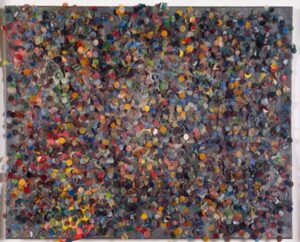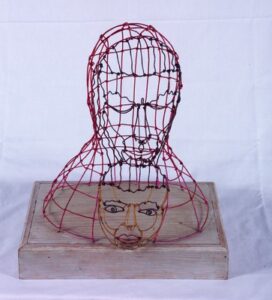African American artists working in the mid-twentieth century addressed racial segregation in various ways. Howardena Pindell's experience of segregation as a child influenced the form her art would later take. After ordering a glass of root beer, Pindell encountered a circle painted on the bottom of the glass—signaling that the glass was only to be used when serving African American patrons. That impactful moment led to Pindell's fascination with circles, a subject and compositional element that she repeatedly returned to throughout her career. “I was instinctively drawn to the circle because it was part of an internal conflict,” Pindell explains. In her art, she recontextualizes the shape, turning the negative into something positive.
Although he also worked as a painter and printmaker, Hayward Oubre is particularly known for painted-wire sculptures such as this one. Called Miscegenation, this sculpture was produced at a time when so-called "anti-miscegenation laws" banned interracial relationships in seventeen U.S. states—including Delaware. In 1967, the Supreme Court unanimously ruled in Loving v. Virginia that such laws were unconstitutional. The Court's opinion stated that anti-miscegenation laws were "measures designed to maintain White Supremacy."



